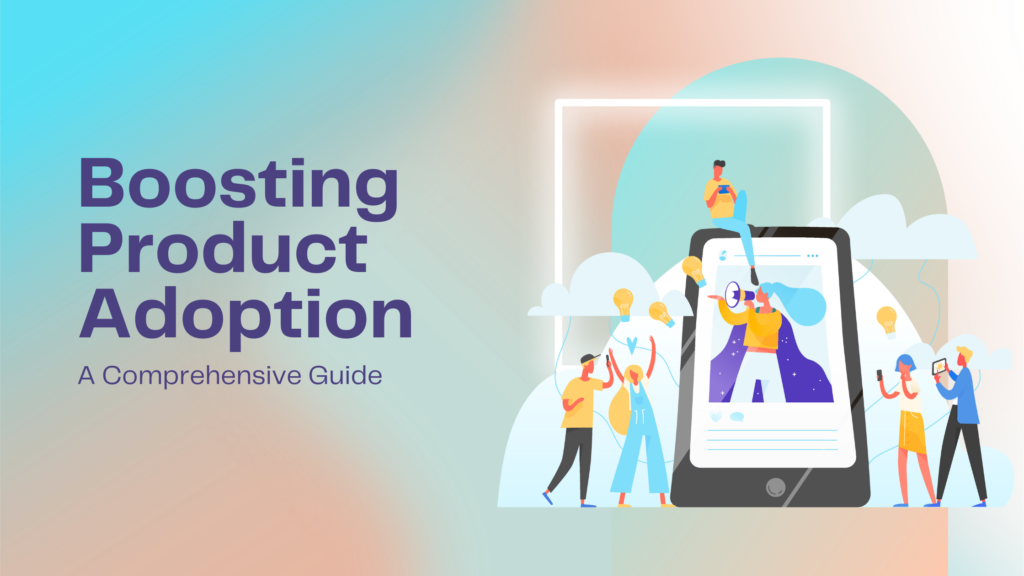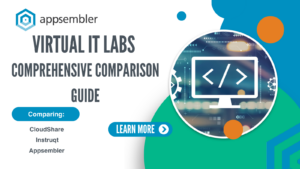This comprehensive guide delves into the strategies and techniques essential to increase product adoption. We explore the importance of user onboarding, common hurdles, and effective strategies to overcome these challenges, underlining the value of metrics to track progress.
Key Takeaways
- The significance of user onboarding in product adoption.
- Techniques to increase product adoption: free trials, customer training, proactive support, and user-friendly design.
- Common challenges in product adoption and effective strategies to overcome them.
- Metrics for measuring product adoption success.
- The importance of product adoption in the sustainability of a business model.
Table of contents
- Understanding Product Adoption
- The Importance of User Onboarding
- Techniques to Increase Product Adoption
- Appsembler’s Role in Product Adoption
- Common Challenges in Product Adoption
- Overcoming Adoption Hurdles with Effective Strategies
- Measuring Product Adoption Success
- Conclusion
- Frequently Asked Questions (FAQs)
Understanding Product Adoption
In the vast ocean of today’s competitive business landscape, the concept of product adoption is a beacon that guides companies towards success. But what exactly is product adoption?
Product adoption is the process through which potential users become active users of a product. It commences from the moment a prospect becomes aware of your offering and culminates when they use it frequently, ingraining it into their daily routines. But the process doesn’t stop there. In fact, the cyclical nature of product adoption ensures that businesses continually strive to retain their customers and help them achieve their goals using the product, thus creating enduring value.
Understanding product adoption is paramount for businesses. It’s not just about selling your product or service; it’s about convincing users to integrate your solution into their lives and make it an essential tool for achieving their objectives. Businesses that succeed in doing this reap significant benefits, including increased customer loyalty, higher revenue, and the potential for organic growth through word-of-mouth marketing.
In essence, product adoption is a pivotal process that links businesses and their customers together. It’s not merely about transactional relationships but fostering a bond that transcends initial interactions, making your product an indispensable part of your customers’ lives.
The Importance of User Onboarding
User onboarding, in the realm of Product Led Growth and Product Marketing, stands as the gateway to increased product adoption. It represents the first interaction between your users and your product, specifically a Learning Management System (LMS) in this context. User onboarding is the process of guiding new users to find value in your product as quickly as possible, and it’s this swift journey to value that cements the foundation for a high adoption rate.
A well-orchestrated onboarding sequence accelerates the user’s journey from novice to power user. It unveils the core features of your LMS, ensuring users understand not just how to use the product, but also why they should use it. A well-executed onboarding process demystifies complexities, fosters an environment for active learning, and is instrumental in amplifying user engagement.
The correlation between user onboarding and product adoption is as integral as the relationship between a teacher and student in a traditional learning environment. Just as a teacher’s effectiveness can dramatically influence a student’s success, the quality of user onboarding directly impacts product adoption rates. Superior onboarding reduces churn, increases user satisfaction, and drives user behavior towards desired outcomes, amplifying product adoption.
In essence, user onboarding serves as a vital compass, navigating users through the early stages of their product journey. An effective onboarding experience can turn the tide in your favor, transforming casual users into loyal advocates, and fueling the engine of product adoption.
Techniques to Increase Product Adoption
Free Trials and Demos
Offering free trials and demos is a strategic cornerstone in the world of Product Led Growth. This technique invites potential customers to explore your Learning Management System (LMS) hands-on, catalyzing a firsthand understanding of its benefits and capabilities. The key to free trials and demos lies not only in offering an exclusive preview of your LMS, but also in illuminating the path to value for the potential users.
Effectively executing trials and demos requires a deep understanding of your target users’ pain points and a demonstration of how your LMS addresses these issues. A successful demo should feel like a curated journey, guiding users through the LMS’s core features, showing them how these features can simplify their lives, and ultimately, leading them to the “aha” moment – the point where they see the value in adopting your product.
Customer Training Programs
In the context of product adoption, training programs serve as an essential bridge between user onboarding and continuous user engagement. These programs play a crucial role in equipping users with the knowledge and skills required to derive maximum value from your LMS.
Take, for example, LinkedIn Learning. It not only offers an extensive library of courses but also provides in-depth training on how to use its platform effectively. The training encompasses various features of the LMS, imparting a thorough understanding of the platform to the users, and thereby driving product adoption.
Proactive Customer Support
Proactive customer support can be a game-changer for product adoption. Instead of waiting for users to stumble upon challenges, proactive support anticipates possible roadblocks and provides solutions even before users encounter them.
Imagine a user trying to create a new course on your LMS but can’t find the option. If your customer support can identify this hurdle based on user behavior and proactively assist them in navigating through it, you’re not just solving a problem, but also showing them how integral they are to your business. This proactive approach instills confidence in your product and motivates users to adopt it more readily.
User-friendly Design
An LMS can have all the advanced features in the world, but if its design isn’t user-friendly, it risks losing the adoption battle. User-friendly design means creating an interface that’s not only visually appealing but also intuitive and easy to navigate.
Consider the example of Canva, a graphic design platform. Its success largely hinges on its simple and intuitive design, making graphic design accessible to everyone, regardless of their skill level. Similarly, an LMS with a user-friendly design significantly enhances user experience, ensuring users can easily navigate and make the most of its features. This ease-of-use lowers entry barriers and greatly enhances the likelihood of product adoption.
Appsembler’s Role in Product Adoption
In the dynamic landscape of online learning, Appsembler carves a unique niche. Recognized as a trailblazer in Learning Management Systems, it ushers in a new era of intuitive, user-centric online learning experiences. Appsembler combines the power of technology with an understanding of educational principles, creating an ecosystem that encourages active learning and fosters growth.
Appsembler excels in bridging the gap between businesses and product adoption. By offering a seamless, engaging user experience, Appsembler ensures its Learning Management System is not just another tool, but an integral part of the learning process. Its platform is user-friendly, enabling learners to navigate and utilize features with ease.
Furthermore, Appsembler places a strong emphasis on user onboarding and customer support, two key elements in the product adoption journey. New users are guided through a carefully crafted onboarding process that familiarizes them with the platform and its functionalities. Customer support is proactive, ensuring that users’ queries and concerns are addressed promptly and effectively.
In addition to this, Appsembler offers extensive training resources, facilitating a deeper understanding of how to use the platform for maximum benefit. Businesses can take advantage of these resources to ensure their employees are well-equipped to use the system, accelerating the adoption process.
Appsembler’s commitment to customer success extends beyond just providing a robust Learning Management System. It focuses on creating a partnership with businesses, supporting them at every stage of their product adoption journey. With Appsembler, businesses can be confident that they are not just implementing an LMS, but embarking on a journey towards improved learning outcomes and higher product adoption.
Common Challenges in Product Adoption
Navigating the labyrinth of product adoption is no easy feat. Businesses encounter several challenges that can impede their journey towards effective adoption of a Learning Management System (LMS).
One prevalent hurdle is lack of user training and education. Simply implementing an LMS doesn’t guarantee its adoption; users need to be educated about its features and benefits. Without sufficient training, users may feel overwhelmed, leading to low adoption rates. A case in point is the early adoption struggles of Microsoft Teams. Users, initially bewildered by its extensive features, gradually embraced the platform as Microsoft bolstered its training and support efforts.
Another common challenge is resistance to change. It’s human nature to prefer familiar processes and tools, and any deviation can induce apprehension. This resistance often slows down product adoption, as seen in the initial response to the shift from traditional classrooms to e-learning platforms.
Finally, poor user experience due to complex or unintuitive design can significantly hinder product adoption. Take, for instance, the early versions of Moodle, an open-source LMS. The system’s complex interface led to user frustration and lower adoption rates. However, subsequent iterations improved the user experience, boosting its popularity among educators.
Overcoming these challenges requires a proactive, user-centric approach that prioritizes training, customer support, and user-friendly design. Companies like Appsembler, that embody this approach, successfully navigate these obstacles, facilitating smoother journeys towards product adoption.
Overcoming Adoption Hurdles with Effective Strategies
Confronted with the challenge of product adoption, businesses need to arm themselves with effective strategies that are up to the task. These strategies provide a roadmap to navigate the hurdles of user education, resistance to change, and user experience.
Overcoming the first hurdle—lack of user training—requires businesses to implement comprehensive training programs. These programs should offer an in-depth exploration of the product’s features and functionalities, leading users towards achieving proficiency in using the Learning Management System (LMS). For instance, businesses can incorporate webinars, tutorials, and interactive guides. These resources empower users, allowing them to derive maximum value from the product.
Resistance to change is a formidable obstacle but not insurmountable. Businesses can employ change management strategies to smooth the transition. A robust strategy should incorporate clear communication about the change, explaining the reasons behind it, and outlining the benefits it brings. Further, involving end-users in the decision-making process can help garner buy-in, reducing resistance.
When it comes to user experience, the answer lies in adopting a user-centric design philosophy. Here, feedback becomes a crucial tool. Understanding users’ pain points, preferences, and behaviors can provide invaluable insights into improving the product’s design. Simplicity should be the mantra; a user-friendly interface with intuitive navigation significantly enhances the user experience, bolstering product adoption.
Finally, proactive customer support goes a long way in overcoming these hurdles. Instead of merely reacting to issues, proactive support anticipates and addresses them, building a trust-based relationship with the user.
By adopting these strategies, businesses can successfully overcome the common challenges in product adoption. More importantly, they can foster a strong relationship with their users, transforming them from mere users to product advocates. The journey of product adoption may be riddled with challenges, but with the right strategies, the journey becomes a rewarding one.
Measuring Product Adoption Success
In the strategic game of product adoption, quantifying success is equally as important as devising robust strategies. A reliable measurement system helps businesses evaluate their product adoption efforts and adjust their strategies accordingly.
One critical metric is the Active Users ratio, which compares the number of active users to the total number of users. This measure helps understand the percentage of users who are actively using your Learning Management System (LMS). A higher ratio indicates a more successful product adoption strategy.
User Retention Rate is another pivotal metric. This rate gauges the number of users who continue using the product over time. High user retention signifies users are finding value in your LMS, indicating a successful adoption strategy.
Time to First Value (TTFV), the time it takes for a user to achieve the first meaningful outcome from using the product, is a crucial metric that speaks volumes about your user onboarding process. A short TTFV indicates a successful onboarding strategy, translating into increased product adoption.
Customer Satisfaction Score (CSAT) and Net Promoter Score (NPS) provide insights into the user’s overall satisfaction and their likelihood to recommend your LMS to others. These metrics give you a glimpse into your product’s perceived value, impacting product adoption.
Interpreting these metrics requires understanding that product adoption is not an isolated event, but an ongoing process. Metrics may fluctuate, and these fluctuations can provide useful insights. For example, a sudden drop in the Active Users ratio might signal an issue in your product that needs addressing.
Acting on these metrics involves using them as a springboard to iterate and improve your strategies. For example, if your User Retention Rate is low, it may be time to reassess your user training programs or enhance customer support.
In the end, measuring product adoption success involves a careful balance of tracking the right metrics, interpreting them accurately, and acting proactively. It’s not just about numbers, but about using these numbers to build a more successful, user-centric product.
Conclusion
Navigating the intricate waters of product adoption is undeniably a daunting task. However, understanding its significance, mastering onboarding techniques, and developing a keen sense of strategies to boost product adoption make this journey smoother. Be it providing free trials and demos, designing user-friendly interfaces, or investing in customer training and proactive support—each facet forms a stepping stone towards successful product adoption.
Moreover, the journey isn’t complete without a measure of success. Metrics like Active Users ratio, User Retention Rate, Time to First Value, and CSAT and NPS scores offer a reality check, propelling businesses to iterate and improve.
In the grand scheme of things, product adoption goes beyond mere usage—it’s about building a relationship with your users, fostering an environment where they become the product’s advocates. In this sense, effective product adoption is the linchpin to a sustainable business model, making it a pursuit worth every effort.
Frequently Asked Questions (FAQs)
Product adoption is a process through which new users become accustomed to a product, start using it regularly, and derive value from it. It’s an essential part of the user’s journey and crucial to business success as it directly impacts user retention and growth.
User onboarding is a crucial phase where users learn about a product and how to use it effectively. A well-executed onboarding process increases user engagement, reduces abandonment, and accelerates the product adoption process.
An LMS like Appsembler plays a pivotal role in product adoption. Its user-centric design, extensive training resources, and proactive customer support facilitate a smooth adoption process. Appsembler’s commitment to customer success ensures businesses are supported at every stage of their product adoption journey.
Some common challenges in product adoption include lack of user training, resistance to change, and poor user experience due to complex or unintuitive design. Overcoming these challenges requires a user-centric approach that prioritizes training, customer support, and user-friendly design.
Product adoption success can be measured using various metrics like Active Users ratio, User Retention Rate, Time to First Value, and Customer Satisfaction Score (CSAT) and Net Promoter Score (NPS). These metrics provide valuable insights into the effectiveness of product adoption strategies and help in making data-driven decisions.



